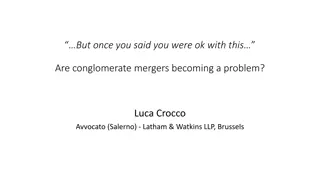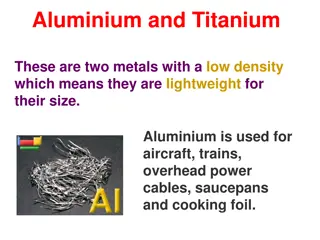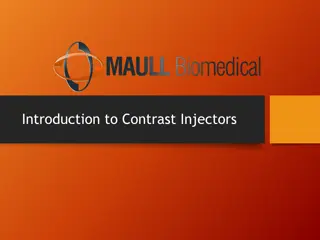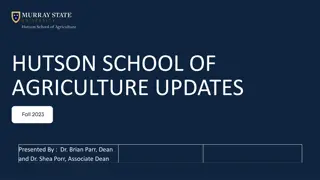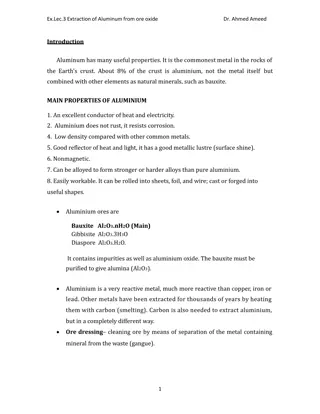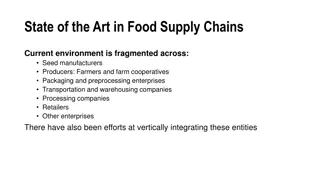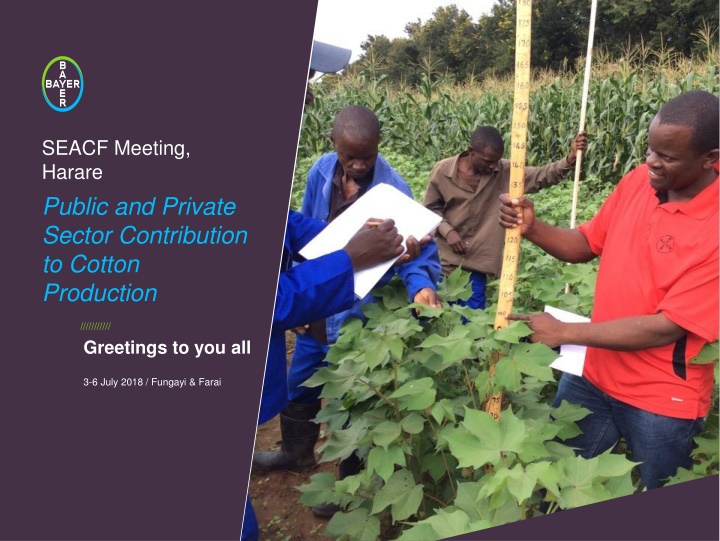
Enhancing Cotton Production: Public and Private Sector Collaborations in Harare Meeting
Explore the challenges and opportunities in cotton production discussed at the SEACF meeting in Harare. Discover the key roles of public and private sectors in improving the cotton value chain, addressing issues from seeds to market access.
Download Presentation

Please find below an Image/Link to download the presentation.
The content on the website is provided AS IS for your information and personal use only. It may not be sold, licensed, or shared on other websites without obtaining consent from the author. If you encounter any issues during the download, it is possible that the publisher has removed the file from their server.
You are allowed to download the files provided on this website for personal or commercial use, subject to the condition that they are used lawfully. All files are the property of their respective owners.
The content on the website is provided AS IS for your information and personal use only. It may not be sold, licensed, or shared on other websites without obtaining consent from the author.
E N D
Presentation Transcript
SEACF Meeting, Harare Public and Private Sector Contribution to Cotton Production /////////// Greetings to you all 3-6 July 2018 / Fungayi & Farai
Agenda 1. Introduction (slide 3) 2. Major challenges in cotton production (slide 4) 3. Cotton inputs (slides 6-7) 4. Unpacking the role of R&D agrochemical companies(slide 8) 5. How does Bayer respond to pest challenges 6. Demo trials & stewardship training (slide 10) 7. Photo of demo trial (slide 11) 8. Parameters for introducing new chemistry (slide 12) 9. Cotton Farmers (slide 13) 10. Cotton/Ginners Merchants (slide 14) 11. Yarn, textile and clothing manufacturers (slide 15) 12. Cotton VC for South Africa (slide 16) 13. How Cotton SA industry created 5,500 jobs (slide 17) 14. Achievements, constraints and ultimate goals (slide 18) 2 /// Bayer 16:9 Template Chart Pool /// December 2017
Introduction Cotton is one of the export crops of in east and southern Africa Cotton is mostly grown by smallholder farmers providing labour to rural households. Before 1990 most cotton marketing and trade were handled by governments and cooperative unions. After 1990 governments eliminated monopoly and liberalised the cotton industry and allowed entry of private ginners/merchants However there are still many challenges to be resolved 3 /// Bayer 16:9 Template Chart Pool /// December 2017
Excerpt of the Zimbabwe Cotton Value Chain Source: Cotton Value Chain Analysis, 2009 4 /// Bayer 16:9 Template Chart Pool /// December 2017
Major challenges in cotton production Low cotton yields and poor quality seed cotton production Lack of access to credit for key inputs for cotton production Under funded national agricultural extension services Lack of contract integrity by smallholder farmers Side marketing to dodge repaying cotton input advances Use of chemicals-off label Persistent use of the chemicals from same group/resistance Lack of high yielding cotton cultivars (restrictions on GMOs) Side selling of free inputs from Government Outdated technology Lack of investment into the cotton industry 5 /// Bayer 16:9 Template Chart Pool /// December 2017
A closer look at the cotton value chain 1. Cotton Inputs: Seeds, certified seed, government cotton research institutes - Public sector responsibilities to develop high yielding good quality cotton cultivars funding challenges - Private companies can play a big role, i.e. Bayer sales GMO cotton planting under license from Monsanto (can yield up to 8.2mt/ha under irrigation) Seed multiplication: ginners, farmers, agriculture tertiary institutions - Can produce under license and strict supervision - Maintain genetic purity and seed vigour 6 /// Bayer 16:9 Template Chart Pool /// December 2017
Cotton inputs continued Extension services; government departments, farmers and ginners - Synergies between the public institutions and private sector - Funding assistance from NGO programs Agro-chemicals and fertilisers - R&D Companies (unpack their role in next few slides) - Generic companies Water, electricity and fuel: - Government or private sector (constant and uninterrupted supply) Labour force minimum wages, labour laws (restrictive) 7 /// Bayer 16:9 Template Chart Pool /// December 2017
Unpacking the role of R&D agrochemical companies 8 /// Bayer 16:9 Template Chart Pool /// December 2017
How does Bayer respond to pest challenges Identify the pest causing economic losses, search globally for chemical products that have been developed to control the pest Gather information on crop production hectares, number of treatments, practical use rate, selling price, COGS Conduct a viability assessment, NPV, IGM, Pay back time etc. Sign contracts for research trials with credible partner organisations, like CRI to conduct research trials for three years Conduct Minimum Residue Tests Prepare a dossier and submit application for registration Organise a product launch and sell the product to the farmers through channel partners 9 /// Bayer 16:9 Template Chart Pool /// December 2017
Demos trials and stewardship training Conduct on farm demo trials in the target market segments They are useful tools for practical training of farmers and extension staff Bayer also provides training on stewardship safe use, transport and storage of crop chemicals Training on product knowledge and crop protection management 10 /// Bayer 16:9 Template Chart Pool /// December 2017
Demo trial planted in a target market segment 11 /// Bayer 16:9 Template Chart Pool /// December 2017
Parameters for introducing new chemistry Develop products that target a specific pest Products with a low environmental toxicological profile Low dosage rates Products that are safe to users and to the environment (WHO class III and above) Products that are tolerant to bees and other beneficial pests Introduce active ingredients in different family groups for resistance management 12 /// Bayer 16:9 Template Chart Pool /// December 2017
Cotton Farmers 1. Commercial farmers production under irrigation and dryland, high input regime - Have cooperatives and own ginneries - Utilise hybrids and GMO cultivars 2. Medium scale dryland/irrigation production - Contract production from ginners who provide input advances 3. Smallholder mainly dryland - Contract production by ginners who provide input advances, extension, training and a ready market for the seed cotton 13 /// Bayer 16:9 Template Chart Pool /// December 2017
Cotton Ginners/Merchants Identify cotton production areas and organise farmers into groups Provide input advances to contract farmers Produce, treat and distribute cotton planting seed Provide extension services, training and production guidelines Provide the demand pull by buying all the seed cotton produced Process the seed cotton to lint, ginned seed for local and export market 14 /// Bayer 16:9 Template Chart Pool /// December 2017
Yarn, textile and clothing manufacturers Balance local demand versus exports Value addition to generate more revenue Employment creation Trade policy and guidelines to curb local market distortions Investment is spinning and weaving technologies to compete globally Cotton from farmer to retail (clothes with labels indicating local production) 15 /// Bayer 16:9 Template Chart Pool /// December 2017
Cotton Value Chain for South Africa Soure: Adapted from Cotton South Africa, 2014 16 /// Bayer 16:9 Template Chart Pool /// December 2017
How Cotton SA Industry Created 5,500 Jobs Sharing best practices 5 Year Plan On 1 April 2014, Department of Industry & Trade (DTI) launched 5 year plan to improve capacity, competitiveness and create jobs Established a national textile cluster (SASTAC) and provided R200m grant Cotton industry formed the Sustainable Cotton Cluster in May 2014 Entire cotton VC; farmers, ginneries, spinners, dyers, finishing plants, weavers, retailers and consumers were brought together Mr Price Group served as first pilot for the integrated supply chain program Edcon, Clicks and Woolworth joined in (from farm to retail) Cotton Cluster has established 11 VCs (t-shirts, chinos, towels) >R2billion /Source: Farmer s Weekly 4 May 2018 17
Achievements, Constraints & Ultimate Goals Lint production has increased sevenfold from 25,000 bales in 2013 to 180,000 bales this season Investment in 3 ginneries worth R200m Investment in harvesting machines to consolidate picking and baling Created 5,500 jobs from farm to retail Provided funding support for 1,000 small farmers (4,500ha) Constraint: spinning and weaving capacity is almost 1000% Ultimate goals: increase productivity utilising biotechnology Increase local beneficiation by doing import substitution of 4 basic retail items Create more than 75,000 new jobs 18
Thank you! /////////// Bye-Bye

